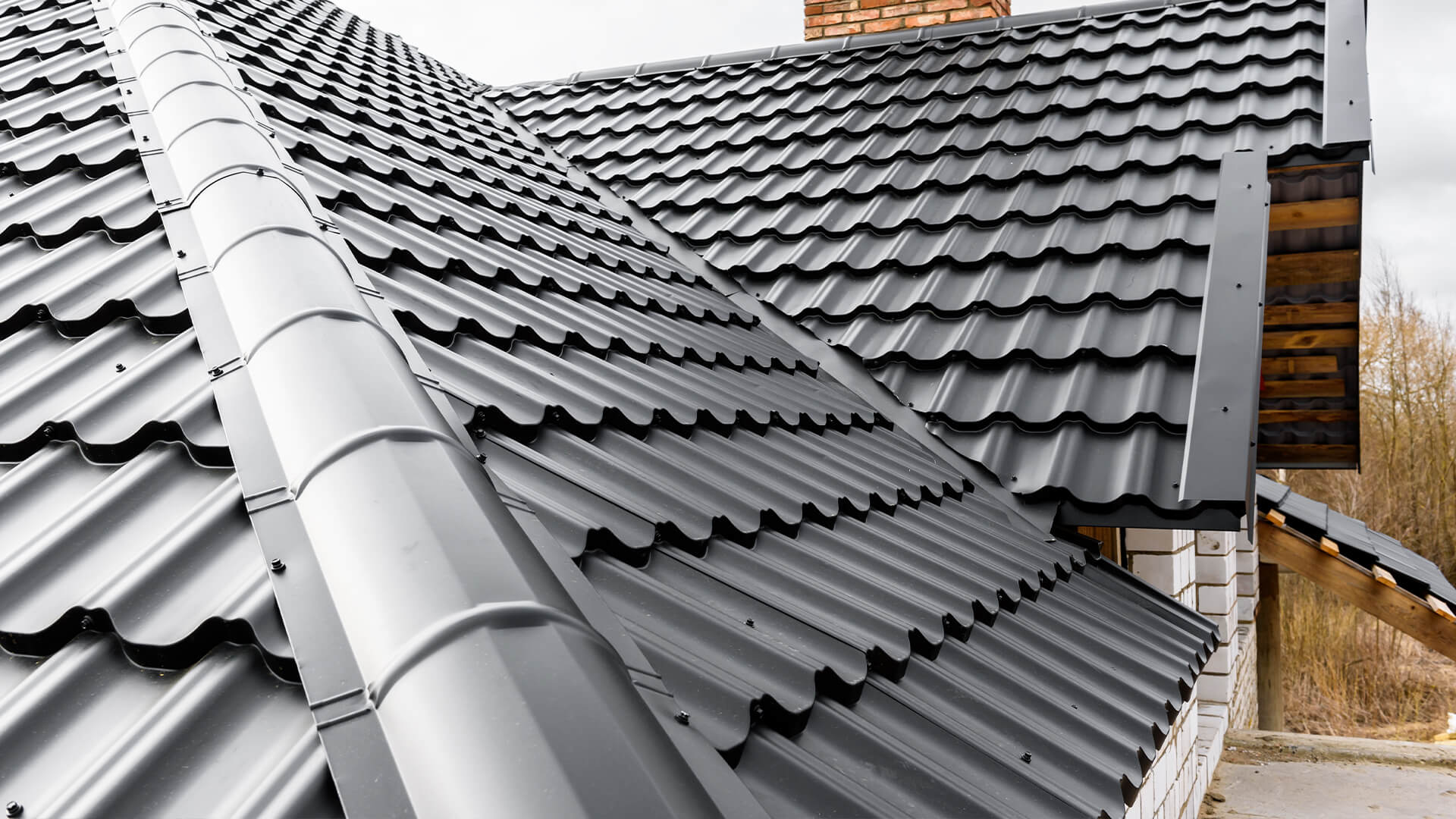How Gainesville Roofing Companies Can Change Your Home's Outside
How Gainesville Roofing Companies Can Change Your Home's Outside
Blog Article
Ideal Practices for Ensuring Appropriate Roof Air Flow
Making sure appropriate roofing ventilation is vital for the longevity and efficiency of a roof system. A balanced consumption and exhaust vent proportion, frequently 1:300, plays a critical role, with consumption vents ideally placed at the lower side of the roofing for trendy air entry and exhaust vents at the optimal for warm air exit. Regular examinations to determine obstructions and preserve clear airflow are extremely important. Maintaining insulation away from vents is crucial to stop airflow limitation. Recognizing these foundational components sets the stage for even more detailed understandings into installment and maintenance practices that can dramatically improve your roofing system's efficiency.
Understand Ventilation Basics
Correctly understanding ventilation essentials is important for making certain the long life and effectiveness of roof covering systems. Reliable ventilation mitigates wetness accumulation and temperature extremes in the attic, both of which can result in significant structural damage in time. A well-ventilated roof covering helps in avoiding typical problems such as mold growth, wood rot, and ice dams, which can endanger the integrity of the roof products and the underlying frameworks.
The main goal of air flow is to facilitate the movement of air, permitting for a constant exchange between the outdoor and indoor settings. This balance is achieved via a mix of consumption and exhaust vents that interact to preserve ideal airflow. Intake vents, usually located along the eaves or soffits, permit fresh air to get in the attic room area, while exhaust vents, typically located at or near the roof covering ridge, make it possible for hot, moist air to get away.
Trick elements influencing the effectiveness of roofing ventilation include appropriate placement, sufficient sizing, and guaranteeing that both consumption and exhaust vents are unblocked. Regular evaluation and upkeep are vital to determine potential obstructions, damages, or inadequacies in the ventilation system, thereby guarding the roof covering's performance and durability.
Kinds Of Roof Vents
Roofing vents play a crucial function in preserving reliable attic room ventilation and, by expansion, the general wellness of the roof system. Numerous sorts of roof vents are offered, each with unique advantages tailored to certain roofing requirements. Ridge vents, for example, are set up along the roof's height, allowing cozy, damp air to escape from the attic room. They offer continuous air flow and mix seamlessly with the roofline, making them both reliable and visually pleasing.

Soffit vents are installed under the eaves and job in tandem with roofing vents to guarantee a well balanced intake and exhaust system. By permitting cooler air to enter from below, soffit vents facilitate the expulsion of warm air via top vents. Gable vents, situated on the exterior wall surfaces of the attic room, deal an additional reliable remedy, specifically in homes with saddleback roofs.
Examine Your Existing Air Flow
Following, take into consideration the age and condition of your roof covering products and air flow parts. Older systems may not follow present building ordinance or might have deteriorated in time, minimizing their efficiency. Conduct a comprehensive my response exam to recognize any indications of wear and tear, such as corrosion, damages, or gaps that could endanger the system's performance.
Furthermore, determine the attic temperature and moisture levels. Heats and moisture can suggest poor ventilation - gainesville roofing companies. Utilize a hygrometer and thermometer to obtain exact readings, contrasting them with outside problems. Relentless disparities recommend possible issues that need addressing.
Setup Best Practices
Efficient installment of roof covering ventilation systems is extremely important for making certain optimum performance and durability. Proper installment starts with comprehending the particular ventilation requirements of the roofing system and the structure it covers. This entails determining the proper proportion of consumption to wear down vents, typically sticking to the 1:300 rule, which states one square foot of ventilation for every 300 square feet of attic floor area.

Consumption vents need to be mounted at the roof's lower edge, usually in the soffits, to permit awesome air to enter. Exhaust vents, on the other hand, need to be set up near or at the roofing system's optimal to promote the departure of cozy, damp air.
Seal all vent connections thoroughly to stop air leaks and potential water infiltration. Usage premium materials and adhere to maker standards to ensure longevity and efficiency. In addition, incorporating ridge vents with baffles can dramatically boost air flow efficiency by preventing wind-driven rainfall and snow from going into the attic room.
Ultimately, specific setup of roof covering ventilation systems alleviates prospective concerns such as mold growth, ice dams, and structural damages, making sure the roof covering's honesty and the structure's overall health and wellness.
Regular Maintenance Tips
Uniformity in upkeep methods is essential to making certain the long-lasting efficiency of roof covering air flow systems. Routine assessments are critical, preferably done biannually-- in the spring and loss. During these examinations, guarantee that vents are without debris, nests, and various other blockages that might restrain airflow. Examine for any kind of indications of moisture build-up or mold, as these can indicate incorrect air flow or leaks (gainesville fl roofing companies).
Utilize a soft brush or a vacuum to eliminate dust and particles from intake and exhaust vents. Be mindful not to harm the air vent screens or louvers throughout the procedure.
Proper insulation is just as crucial. Guarantee that attic room insulation does not obstruct the vents, as this can drastically restrict airflow. If any insulation look at this web-site has actually changed or resolved, reposition or change it to keep a reliable barrier.
Last but not least, replace any harmed or missing out on elements without delay. Damaged vents, split tiles, or shabby blinking can all contribute to inadequate ventilation and ought to be dealt with without delay. Routine upkeep guarantees that the roofing air flow system works ideally, thereby extending the life-span of the read this roofing system itself.
Final Thought
Ensuring proper roof air flow is vital for maintaining the effectiveness and sturdiness of a roofing system. Adherence to the 1:300 intake and exhaust air vent proportion, coupled with the critical positioning of vents, is necessary. Routine biannual assessments, debris cleaning, and ensuring insulation does not obstruct airflow are important techniques. Executing these ideal techniques will cultivate a well-ventilated roof, consequently reducing prospective concerns associated to moisture build-up and extreme warm, eventually lengthening the roofing system's life-span.
A balanced consumption and exhaust vent proportion, commonly 1:300, plays a critical function, with consumption vents ideally put at the reduced side of the roof for great air entry and exhaust vents at the peak for cozy air exit. Intake vents, normally located along the soffits or eaves, enable fresh air to go into the attic room room, while exhaust vents, often located at or near the roofing ridge, enable hot, humid air to run away.
Soffit vents are mounted under the eaves and work in tandem with roof vents to ensure a well balanced intake and exhaust system. By permitting cooler air to enter from below, soffit vents help with the expulsion of hot air through top vents. Adherence to the 1:300 consumption and exhaust vent proportion, paired with the calculated placement of vents, is crucial.
Report this page